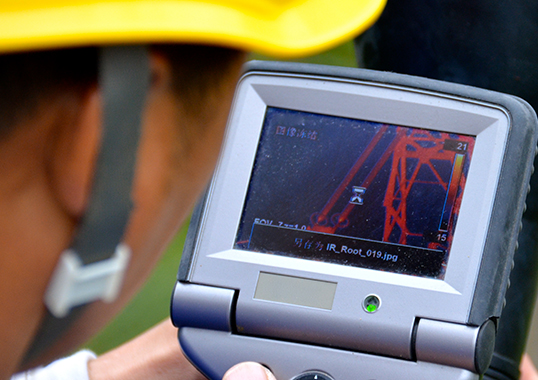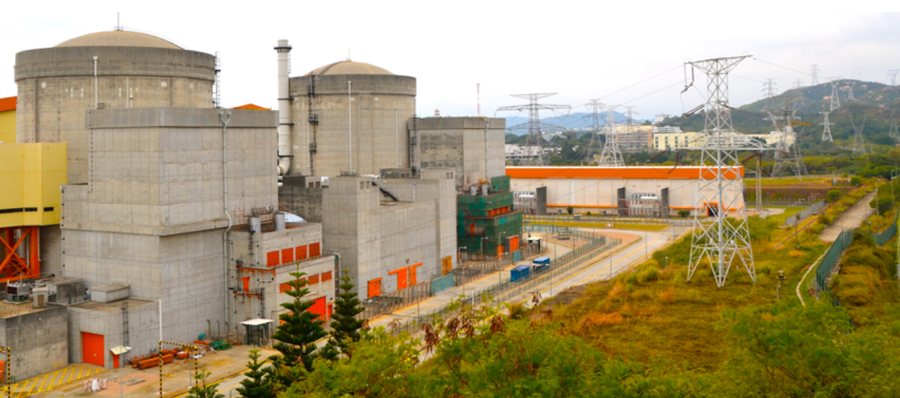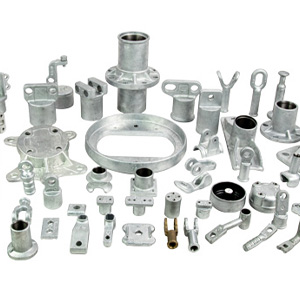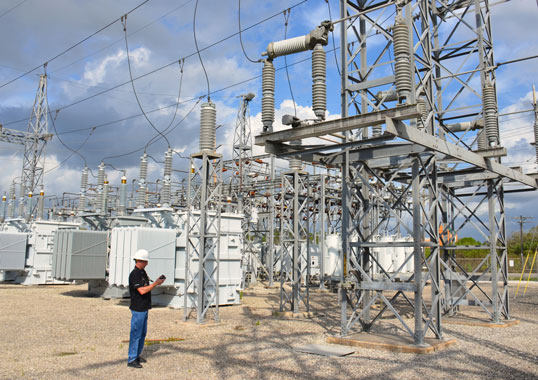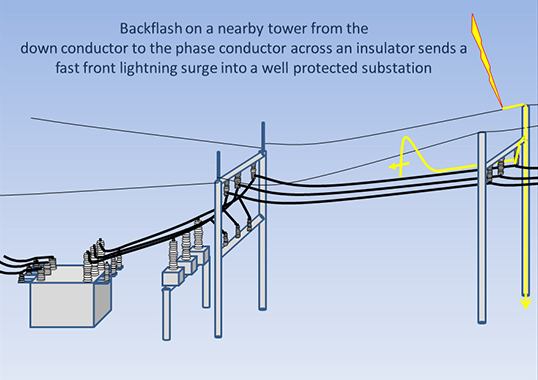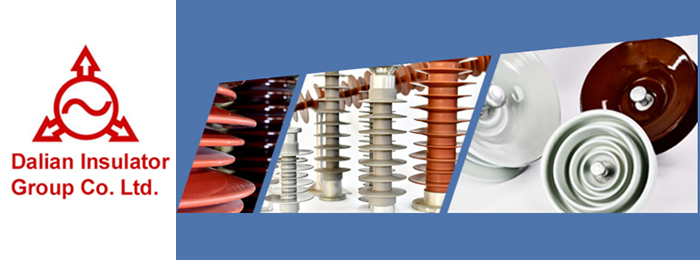Past research studied the mechanical failure of a 500 kV composite insulator in a relatively clean environment in central China. The failure, which did not show the typical characteristics of brittle fracture, resulted from internal moisture accumulation due to improper bonding of the sheath to the core rod during manufacture. The core was then progressively degraded by a water-induced ageing process until it was no longer strong enough to support the load.
Subsequently, additional mechanical failures were also reported in southern China, one of which involved an I-string insulator on a 500 kV line. There was initial concern that this was another example of the same failure mode linked with a manufacturing defect. However, subsequent investigation revealed a different explanation: severe erosion of the silicone rubber sheath due to intense corona discharges. This allowed moisture and acids to penetrate into the core and erode the rod material. Indeed, grading electric field near the live end is a critical requirement for composite insulators operating on high voltage lines, especially in areas with elevated pollution levels combined with frequent wetting.
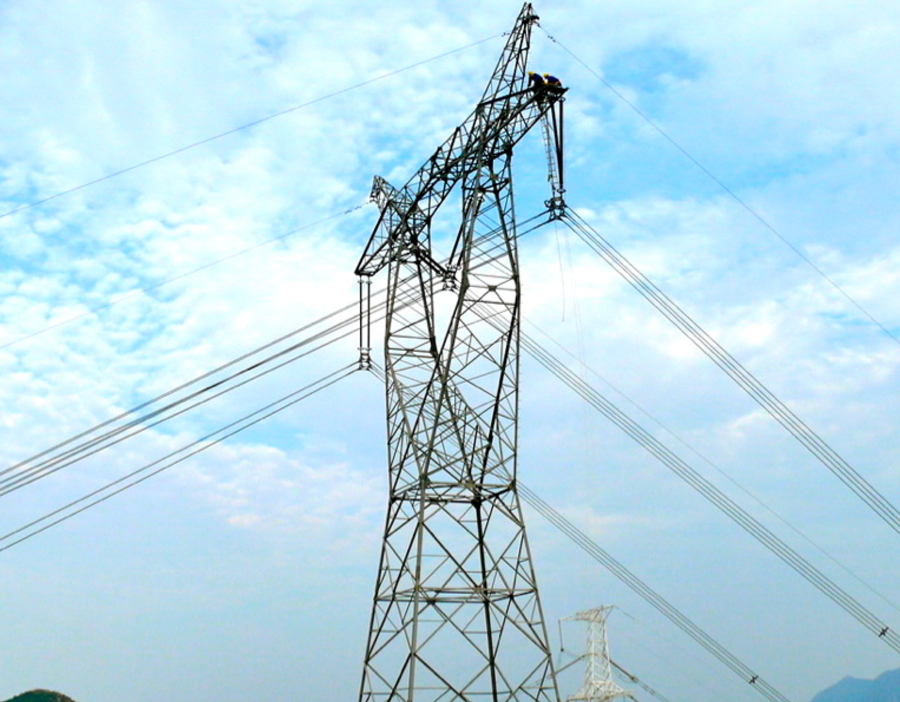
The 500 kV Lingshen Line is one of many that fan out across the countryside surrounding the Daya Bay Nuclear Power Plant in southeast China. Operated by the Shenzhen Power Bureau (part of the China Southern Power Grid) and running across mountainous terrain, the line is composed of two circuits. These circuits share the same towers along certain sections of line but employ different towers along other sections.
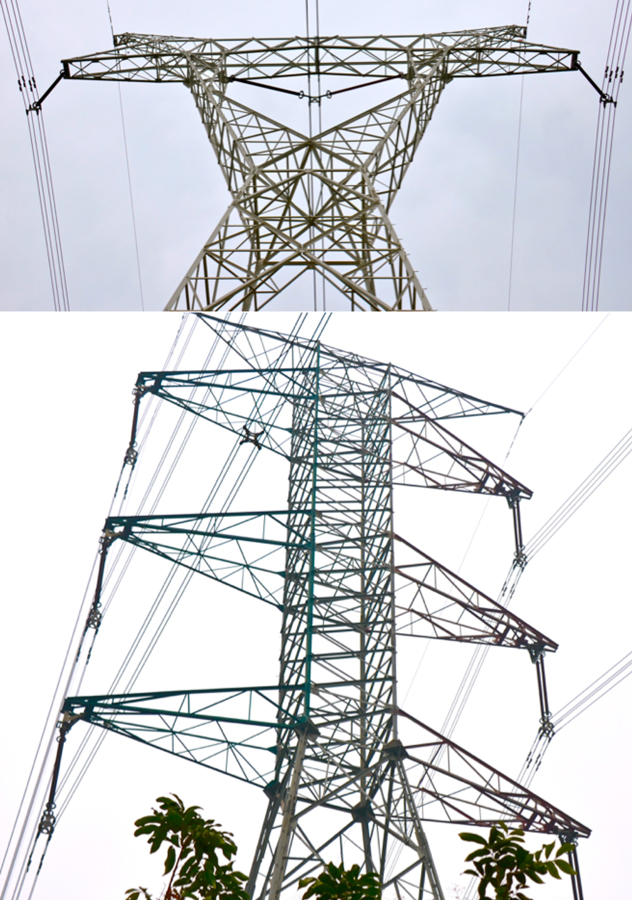
The line’s pollution exposure comes mainly from the sea, which is only about two kilometers away at its nearest point. Engineers assess the line’s service environment as falling between Class II and IV in terms of the pollution scale used in China, depending on section of line and its exposure to winds sweeping in from the coast.

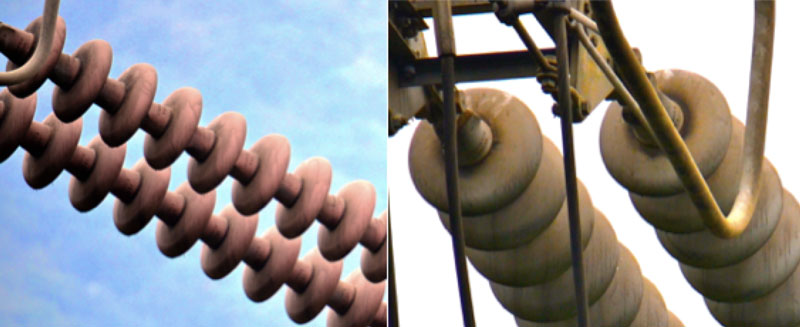
Built just over a decade ago, the line was first insulated with glass cap & pin strings but these were subsequently replaced by silicone long rods due to problems of high noise. Glass strings were used in tension applications but later coated with RTV silicone material to improve performance.
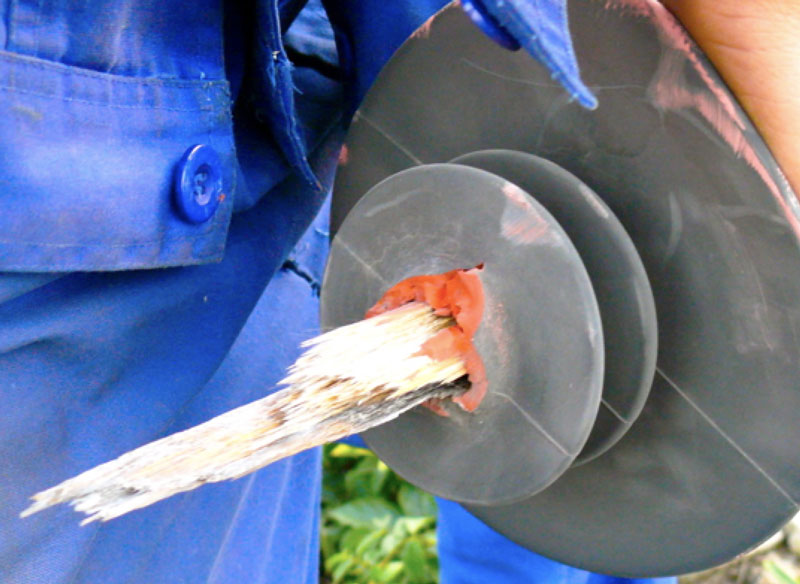
Fortunately, the failed silicone insulator was in a double I-string configuration so there was no interruption of service. Engineers at the Shenzhen Power Bureau point to this as validation of the advisability of applying not only double-string configurations on important lines but also separate hanging points. As such, if one string breaks, as in this case, the other can still support the operating voltage and load.
Indeed, to increase the Lingshen Line’s reliability based on this experience, most single composite string towers with relatively large differences in altitude compared to the adjoining one or having longer than normal span lengths were subsequently modified to double strings.
The insulator that fractured was removed and sent for analysis to determine cause of failure. The main finding was that there was an unacceptably high level of partial discharge activity near the live end under high electric field intensity. This led to severe erosion of the insulator’s silicone rubber housing. The implication was that, given the line’s service environment of pollution and wetting, the corona rings were not adequately designed for such conditions.
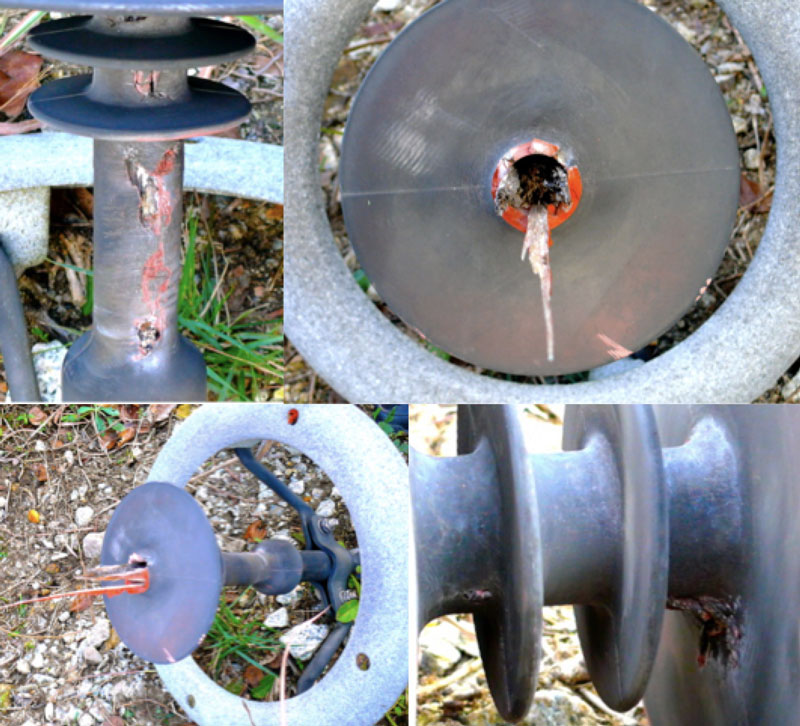
With this concern in mind, the Shenzhen Power Bureau instituted a program to inspect all the line’s insulators to determine if the problem was widespread or just isolated to a unit that may have been somehow defective or improperly installed. A total of more than 600 strings were examined over the course of the following months as part of a systematic inspection program using a hand held infrared camera. The process revealed that some 85 strings were ‘running hot’, i.e. had abnormally high temperatures near their live ends versus ambient.
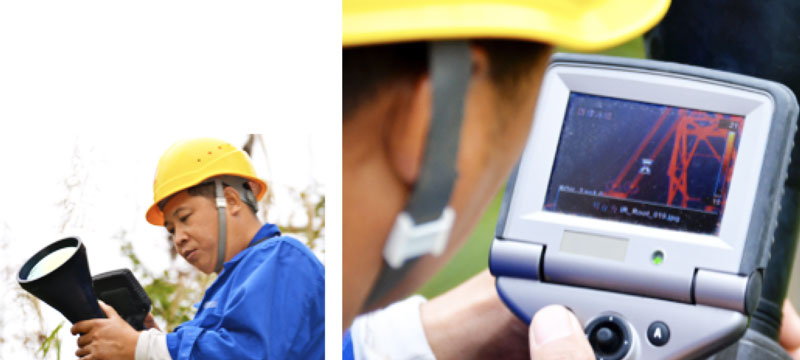
To gather more data on the problem, ‘hot’ insulators were removed and separated into five categories based on their elevated temperature gradient: 1-3°C; 3-5°C; 5-7°C; 7-10°C; and greater than 10°C. Each insulator was tagged with detailed information, including specific tower, phase sequence, location either to right or left side, etc. A total of 20 insulators, i.e. 4 units from each of these 5 categories were then sent for testing to study the possible causes of overheating.
On the advice of experts at the Shenzhen Campus of Tsinghua University and from China Southern Power Grid, a maintenance program was then established to monitor temperature profiles of all the line’s insulators. According to these experts as well as the Technical Guide for infrared diagnostics of live high voltage equipment (DL/T 664-2008), any string whose maximum temperature was found to exceed ambient by at least 5°C would then be replaced, in most but not all cases by a double string.
In the end, several dozen strings were replaced with insulators from a different supplier having the same basic shed geometry and creepage but featuring a different design of corona ring. While the original insulators were equipped with rings having a concave lower surface, rings on replacement insulators have convex upper and lower surfaces.
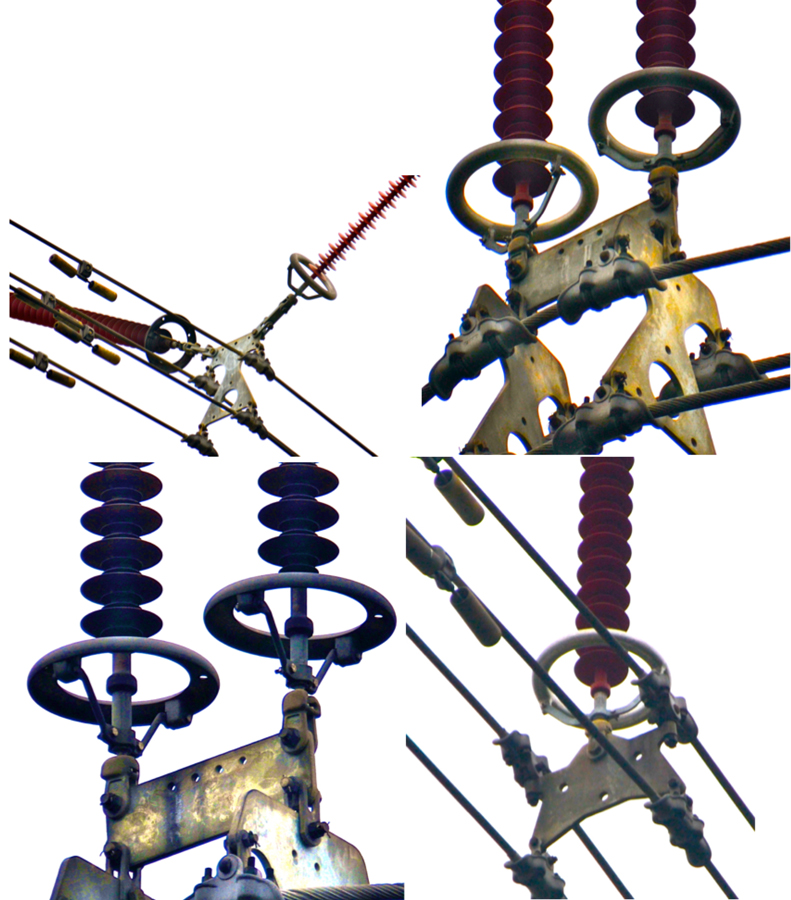
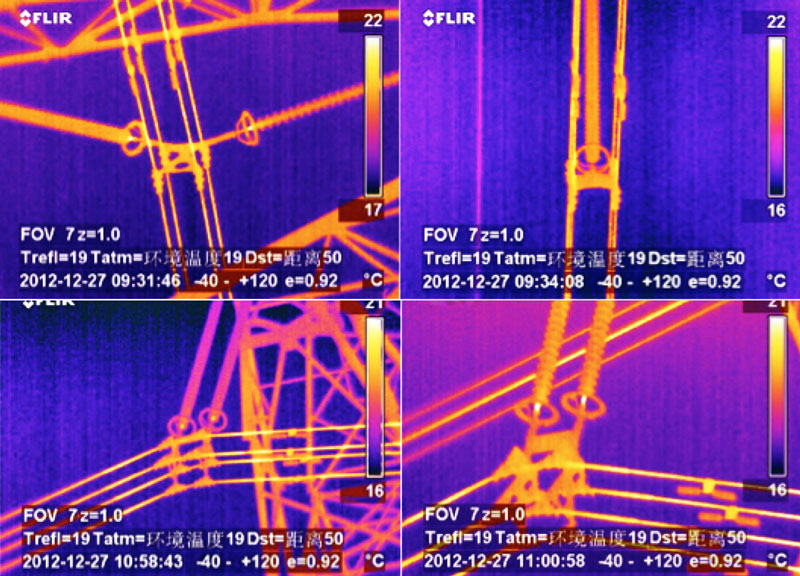
According to experts at Tsinghua University in Shenzhen, this experience confirmed the criticality of controlling corona on silicone rubber insulators resulting from partial discharge activity under high electric field. It also offered insight into some of the practical remedial measures that can be taken should such situations occur. Equally important, it highlighted the need to systematically monitor the condition of composite insulators through established diagnostic procedures, such as infrared scans of their thermal profile, to detect incipient problems before these lead to failure.
[inline_ad_block]

